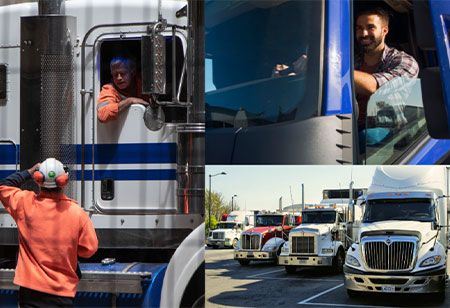
Truck drivers are vital for the transportation of goods over long distances. Given commercial trucks' large size and heavy weight, these vehicles pose more significant risks than passenger cars.
This is one of the reasons why there are different laws for truck drivers. These regulations ensure the safety of drivers and other road users' while maintaining the logistics industry's efficiency.
Understanding the specific laws that apply to truck drivers is essential, as they differ significantly from those for standard vehicles. Let’s explore the key regulations that govern the trucking industry.
The FMCSA enforces the Hours of Service (HOS) rule, which is vital for truck drivers. The HOS regulations aim to prevent driver fatigue, a significant contributor to road accidents. Fatigue is particularly dangerous in trucking, where long distances and extended hours are typical.
Critical aspects of HOS include:
• 11-hour driving limit: Drivers can only operate their vehicles for 11 hours after 10 consecutive hours off.
• 14-hour duty limit: Drivers cannot drive after 14 hours on duty following a 10-hour rest period.
• 30-minute break: It is mandatory for drivers to take a break of 30 minutes after 8 hours of driving.
These rules are designed to keep drivers alert and reduce accidents caused by drowsy driving.
Drivers of large trucks must possess a Commercial Driver's License (CDL) to operate large vehicles legally. Acquiring a CDL requires passing knowledge and skills tests to ensure drivers are prepared to handle large trucks. Depending on the cargo, special endorsements may also be required:
• HazMat: For transporting hazardous materials.
• Tanker: For vehicles carrying large quantities of liquids.
• Double/Triple trailers: These are for trucks pulling multiple trailers.
These licenses help ensure that drivers are equipped to handle the unique responsibilities associated with their vehicles.
Truck weight and size limits protect roads, bridges, and infrastructure. The federal maximum weight for trucks is 80,000 pounds, and there are limits on axle weight. Trucks exceeding these limits may cause road damage and face heavy fines.
Weight and size regulations vary between states, making it essential for drivers to stay informed, especially when traveling across state lines.
The trucking industry is subject to environmental regulations designed to reduce pollution from commercial vehicles. The EPA emission standards require trucks to limit pollutants, while states like California have stricter rules under the California Air Resources Board (CARB). These laws ensure trucks comply with both federal and state standards, promoting cleaner air.
Truck drivers must adhere to strict drug and alcohol regulations. The FMCSA mandates random testing for drivers, and the legal blood alcohol limit (BAC) for commercial drivers is 0.04%, lower than the standard 0.08% for non-commercial drivers.
 Distracted Driving Laws
Distracted Driving LawsDistracted driving is a significant risk for truck drivers. Federal regulations ban commercial drivers from using hand-held devices while operating their vehicles. A violation can result in a fine of up to $2,750, and repeated offenses may result in losing a CDL. This law aims to reduce accidents caused by distractions behind the wheel.
The regulations specific to truck drivers, such as those concerning hours of service, licensing, and environmental standards, are crucial to ensuring road safety. Staying compliant with these laws helps protect drivers, the public, and the infrastructure they rely on.
We use cookies to ensure you get the best experience on our website. Read more...